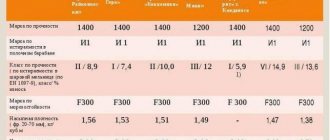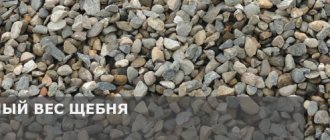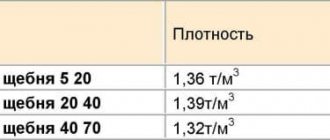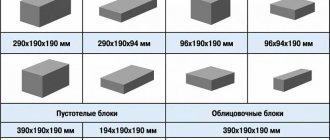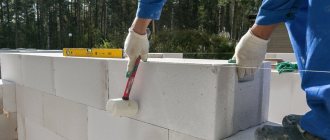Home Useful information How many tons of sand are in a cube
Article rating: 4.9 out of 5 Votes: 10
Sand is a building material of natural origin, which is extracted from river beds, from the bottom of dry reservoirs, and in quarries. There are also artificial varieties of the material obtained by crushing and sifting hard rocks. Since the building material is particles of sedimentary and rocks, its true density depends on its origin. But in order to find out how many tons of sand are in 1 cube, this information is not enough.
Physical differences
The composition of sand includes a great variety of different minerals, rock particles, and possibly the ingress of skeletons of organisms.
Its composition can vary even within the same deposit; this is due to additional impurities, which are very diverse.
It is classified according to the following indicators.
By grain size:
- sand dust;
- fine fraction;
- large faction;
- gravel;
- crushed stone
By location and conditions of formation:
- dune;
- dune;
- river;
- nautical;
- mountain.
By composition:
- lime;
- magnetic;
- quartz;
- gold-bearing.
Sand consists of fragments of the following minerals:
- feldspars;
- quartz;
- mica;
- various impurities, such as small fragments of rocks and skeletons;
By grain size:
- coarse-grained;
- clayey;
- medium grain;
- fine-grained;
- dusty.
Sand can vary in density, the pattern is as follows: the finer the grains, the stronger their compaction occurs. This may also be influenced by other factors acting from the external environment. Setting the weight of sand to 1 m³ is not so simple; it must be calculated taking into account many rules, such as its composition, grain size, density, humidity and others.
Varieties of natural sand
Natural and artificial sand is increasingly found on store shelves today.
River
The one that is mined from the river bottom. It stands out for its cleanliness indicators. May have a yellowish or grayish tint.
River
Particle dimensions reach 0.3 to 0.5 mm. It is used at the stage of mixing mixtures for construction, as well as solutions during the installation of drainages. It is considered the most used and popular type.
Quarry (dusty)
Dusty is mined using the classical method. Its shade is brownish or yellowish. The material contains dust-like impurities and small pebbles.
Career
In its purified and classic form, quarry sand is used for thick lime mortar and a complex of construction works related to the exterior and interior decoration of buildings; a cement screed is created on its basis.
It is extracted from the seabed and is characterized by improved quality.
Nautical
Factors that influence specific gravity
Sand can perfectly absorb and retain moisture, and this factor can significantly increase its mass of 1 m³. It is for this reason that when measuring its weight, its moisture content must be taken into account . In addition, you need to know that the finer the grains, the more moisture they absorb, and the weight of dry material and with high humidity can vary by more than one and a half times.
The second factor affecting mass is its density . Since it is a granular material, it tends to compact and loosen depending on the impact. When loading and unloading the machine, the sand loosens, its density decreases, as well as its weight per 1 m³. During transportation of the material, it can become significantly compacted, then the weight of 1 m³ will be significantly greater, and its total volume will become smaller. The degree of compaction may depend on the composition of the material, for example, river sand is less compacted than quarry sand.
1m3 = 1.43t = 1430kg
* Data obtained according to laboratory studies, passports for 16 varieties (types) of sand, taken from 6 quarries. Conversion factor 1.43 - valid throughout the entire territory of St. Petersburg, and most of L.o.
To determine how many cubes there are in a ton of sand, you need to know its density. And it is equal to 1.43. Next, using the formula: V = m / p, where values: V - volume of sand, m3; m—body mass, t; p—constant 1.43; You can calculate the volume of sand depending on specific mass values.
Example 1. You have 0.3m3 of sand. How many kilograms is this? According to the formula: m = V * p, we calculate: 0.3 x 1.43 = 0.429 t x 1000 = 429 kg
Example 2. One cube of sand contains 28.6 bags, 50 kg each. Total: 1 m3 = 28.6 x 50 = 1,430 kg
Rules for converting tons to cubic meters
To find out how many tons of sand are in a cubic meter, you need to know the following data about the material:
- Density of the material.
- Sand moisture.
- The degree of its compaction.
You can take an example of fine-grained quarry sand , usually its density is 1700 - 1800 kg/m3, and the humidity should be in the range of 6 - 7%.
1 m³ of such material will weigh about 1.7 - 1.8 tons.
You can calculate the weight that an average dump truck can transport. The volume of its body is usually 12 m³, therefore:
1700 kg * 12 m³ = 20400 kg, that is, 20.4 tons.
If the humidity of the sand reaches 20%, then its mass will increase by 4 tons, therefore, one dump truck can accommodate about 25 tons of such material.
Next, you can look at the table, which provides information on the mass of 1 m³ of this or that type of sand.
| Type of material | Number of tons in 1 m3 |
| Dry | 1,21 — 1,75 |
| River | 1,5 |
| River compacted | 1,59 |
| River coarse | 1,47 — 1,63 |
| Building | 1,68 |
| Construction dry friable | 1,44 |
| Construction dry compacted | 1,68 |
| Career | 1,5 |
| Quarry fine grain | 1,72 — 1,8 |
| Quartz regular | 1,41 — 1,95 |
| Nautical | 1,62 |
| gravelly | 1,7 — 1,9 |
| Dusty | 1,61 — 1,75 |
| Natural coarse | 1,49 — 1,61 |
| Natural medium grain | 1,53 — 1,64 |
| Normal humidity for construction work | 1,54 — 1,7 |
| Mountain | 1,5 — 1,6 |
| Chamotte | 1,4 |
| Perlite | 0,074 — 0,4 |
| Ovrazhny | 1,4 |
| Alluvial | 1,65 |
| Medium size | 1,5 — 1,7 |
| Large | 1,53 — 1,6 |
| Small | 1,7 — 1,8 |
| Washed | 1,3 — 1,6 |
| Compacted | 1,68 |
| Wet | 1,92 |
| Wet | 2,08 |
| Water-saturated | 3 — 3,2 |
| Pumice | 0,5 — 0,6 |
| Soil sand | 2,66 |
| Sand and crushed stone | 1,5 — 1,8 |
| Sand and cement | 1,1 — 1,7 |
| Clay red brick fight | 1,2 |
| Magnesite | 2 |
| Titanium alumina | 1,7 |
| Basaltic | 1,8 |
This table does not show all types of material, but the main ones that are most often used in construction and other work. The mass is also not absolutely accurate, since it constantly changes depending on density and humidity.
ZIL, KAMAZ, dump truck: how many cubes are in the back
Sand is transported to construction sites by truck. Some foremen are not even aware of the volume of sand in the dump truck; they do not delve into the true scale of deliveries; they simply state the number of trucks in the order. Hence the problems of shortage or excess of material (and therefore unreasonable expenses) at construction sites. The bodies of the vehicles are different, so the questions of what is the volume of sand in KAMAZ or what is the volume of sand in ZIL should be relevant with a rational approach to supply.
- Sand volume in KAMAZ: 12 m3.
- Sand volume in MAZ: 6 m3.
- Sand volume in a ZIL dump truck: 3 m3.
The volume of KAMAZ in cubes is the largest; sometimes this truck can carry up to 18.5 tons of sand. In ZIL, the volume of sand is significantly less than in KAMAZ; such a dump truck will deliver no more than 5 tons. Often a dump truck (no matter KAMAZ or MAZ) is loaded with a slide, this increases not only the volume of sand, but also the load on the body and chassis. When driving such a MAZ or KAMAZ, the volume of sand in the body may decrease: part of it, having crumbled, will simply remain lying on the road. Therefore, it is recommended not to exceed the capacity of the body of a KAMAZ or other vehicle and load only permissible cubes of sand.
Exact calculation of the required quantity
It is almost impossible to accurately calculate the amount of sand for a number of reasons. For a mathematically accurate calculation, it is necessary to conduct laboratory research and find out the exact density of the material, the degree of its compaction and humidity. The last two data are subject to constant change due to weather conditions. It is for these reasons that converting tons into cubes and vice versa is an extremely difficult task, and calculating the exact volume of the required material is almost impossible.
Based on all this, approximate data for calculations are accepted, usually the humidity is considered to be 7%, and the density of sand is 1600 kg/m3. The error of specific calculations is more cost-effective than the prices for laboratory work and studies of the physical properties of the material.
To correctly calculate the volume of sand required for certain work, you should always take 1 to 3 cubic meters more. This is due to changes in the volume of the material during transportation, it is significantly compacted, and may also dissipate a little. When purchasing, a coefficient of 1.1 - 1.27 is usually used to take into account all changes in the material during transportation and storage that may arise from weather factors.
Varieties
There are a sufficient number of varieties of sand. Each of them has found its application in everyday life and construction. Below are the most common types of sand.
River
Outwardly, it is a bulk material, not ore.
The advantage of it is that it does not contain: clay, dust, salt, pebbles, and so on.
River
This type of sand is extracted in two ways - equator draglines and hydromechanized methods. River sand can be easily distinguished from others by its appearance. It can be white, yellow, or with a gray tint. Sand GOST 8736 is used in everyday life and construction.
If we talk about construction, it is used in the manufacture of reinforced concrete structures, as well as in the manufacture of paving slabs, road slabs, and so on. Characteristics: density – 1.5 kg/m3, sand humidity – 4%, specific gravity – 2.65 g/cm3;
Quartz
Quartz sand is a special bulk material that consists of small granules with a diameter of 0.05-3 mm.
Quartz
It is the impurities that give the sand a certain shade; if we talk about pure quartz sand, it is milky white. It is used in many areas: sandblasting, glass making, concrete and other materials.
Due to its good characteristics, such sand can be painted in any color, which helps to create decorative plaster. Characteristics: humidity less than 10%, clay content 1%;
Career
At its core, quarry sand is an ore-like, granular, bulk material. It contains particles ranging in size from 0.7-5 mm. There are 3 main ways to obtain this type of sand: sifting, washing, open method.
Career
This type of sand is used in all foundation work and road construction work. Sand characteristics: fineness modulus 0.7-5 mm, impurity content 10%;
Nautical
It is a non-metallic bulk material. It is easy to find, on the seabed.
Nautical
It has a wide range of applications, ranging from banal construction to the production of various dry mixtures. But unfortunately, this type of sand is quite rare, since it is not always possible or convenient to extract it;
Artificial
Since the above types of sand are natural (except quartz), artificial sand can also be noted.
Artificial
Before choosing the right sand, you need to know all its characteristics and correctly calculate the volume of sand using rules and formulas. The main characteristics of sand include:
- dimensions, size indicator;
- radioactivity;
- specific gravity;
- a direct indicator of the volume of bulk mass;
- the amount of impurities in the sand;
- filtration coefficient;
- compaction coefficient;
- density.
How much does a cube of sand weigh: calculation of material for construction work
Many types of construction work are performed using sand. This type of material is especially in demand when working with concrete: forming a screed, pouring a blind area, building a foundation or fence, installing a metal carport. Since bulk materials are the main components of construction, it is very important before purchasing to determine how much a cube of sand weighs and calculate its required amount. Types of sand: qualification, application, extraction methods (read more)
Sand is calculated in tons or cubic meters.
What you should know when purchasing construction sand
- The wetter the sand, the denser and heavier the bulk density will be. Material stored outside in winter increases its weight by up to 15% due to snow and ice.
- The grain size depends on the geological and climatic characteristics of the deposit. The larger the grain of sand, the larger the bulk area and the lighter the weight. Accepted sand material size modules: fine - 1.5–2 mm; average - 2–2.5 mm; large - from 2.5 mm.
- Raw materials from a reservoir are characterized by roundness, ensured by the action of water and friction. The material from the quarries is more angular, which gives better results in the adhesion of solutions. If a mechanical impact has been applied to the substance, the flakiness index increases (the presence of flat, needle-like grains of sand). High flakiness slightly reduces the strength of the finished product. For a private building that does not involve multi-story and heavy structures, this is not a fundamental factor.
- Bulk density varies depending on the degree of compaction, which increases when shaking, and decreases when pouring or unloading. Having decided on the amount of bulk building material required for construction, it is recommended to multiply the weight by a compaction coefficient of 1.1–1.3.
In construction technologies, the content of impurities in the composition of natural components is of great importance. The quarry material contains dust, clay, and foreign substances (small stones, plant remains). When creating a durable foundation, impurities play a negative role, so professionals use washed construction sand. Cement or concrete mortar made from a dirty dry mixture cracks. For leveling and landscaping work, the presence of additional elements is not essential. To create plaster mixtures, clay is used as a separate component.
There is artificial sand, which is made from quartz, slag and expanded clay. Such material is rarely used for private construction, especially since natural sand is the most common rock on the planet.
Quartz sand: classification and performance properties (read more)
If you need to know the weight for construction, then you can do without weighing. To obtain accurate values, it is advisable to purchase sand in warm and dry weather.
How to calculate the volume of a cone/pile of sand
Calculating the volume of a cone/pile of sand is another interesting construction problem. It occurs when the volume of KAMAZ is unknown or the dump truck has long dumped all the cubes of sand and left. In such a situation, how can you find out how much a pile piled up on a construction site or in the yard contains?
The volume of a sand pile is calculated using the formula:
| V = ⅓π*R²*H, where V is volume, π is Pi, R is radius, H is height |
If the heap was stored for a long time, then it could turn from a standard cone into a truncated one. Then you can find the volume of sand using the formula:
| V = ⅓π*H*(R₁²+R₁R₂+R₂²), where R₁ is the lower radius, and R₂ is the upper radius. |
Sand fraction size
How many cubes of material are in a bag of sand can be determined taking into account its grain composition. To do this, it is enough to sift the grains of sand using special sieves. As a result, you will be able to determine the level of gravel particles in the material that have certain dimensional data. Typically, the calculations use the particle size modulus of the material.
Table 1. Sand fineness modulus:
| Material type | Size of material fractions, mm |
| Small | 1,5-2 |
| Average | 2-2,5 |
| Large | more than 2.5 |
If you have fractions larger than 2.5 mm in size, most likely you are dealing with quarry or river sand; how much a cube of material weighs in this case will depend on water demand.
According to particle size, the material is divided into 2 classes:
- I – more than 1.5 mm;
- II – with any dimensional data.
The class of material and the size of its fractions determine how much 1 cubic meter of sand costs for construction work.
There are three sizes of sand fractions - fine, medium and coarse.
Methods for calculating sand weight
In order to find out how many cubic meters of sand are in a ton (i.e. 1m3), they resort to laboratory tests, where special measuring containers are used. A cylindrical vessel is filled to the brim with sand without compacting, weighed and calculations begin using the following formula:
p = m : v,
Where:
- p—specific gravity;
- m is the measured mass;
- v is the volume occupied by sand (in this case, the volume of the vessel).
The result of the calculation is recorded in a passport or certificate, which must be provided to the buyer of sand upon his first request. If you need to measure the specific gravity of sand purchased at the construction market at home, you need to take a bucket (10 liters), simply (without clotting) fill it with sand and weigh it. If its weight is, for example, 18 kg, it is necessary to convert this value into tons and substitute it into the formula presented above.
The calculation will be as follows:
0.018t : 0.01l= 18 t/m3
The bucket also has mass, so before starting the calculation you need to subtract it from the total weight. If we compare the obtained result with the tabular data, we can state that the specific gravity of our sand corresponds to the specific gravity of compacted construction sand. With its help you can build a foundation, paving paths, etc.
On average, compacted sand is 15% heavier than loose sand, and wet sand weighs 20-25% more than dry sand. If it is stored outdoors, i.e. It rains periodically, it will be very massive. The weight of a 12-liter bucket filled with such sand will be about 30 kg, which corresponds to 0.03 tons.
Let's calculate the specific gravity of this sand:
0.03 t : 0.012 l = 2.5 t/m3.
Based on the calculation, sand is not suitable for preparing a building mixture. You will have to dry it well and loosen it, otherwise it will be impossible to maintain the required proportions, which will practically lead to a double increase in cement consumption.
Analysis of sand density level in the laboratory and independently
Based on the data on the compaction coefficient of ASG, pitch or soil, it is necessary to determine whether the actual density of the base corresponds to the desired value.
Using samples
The most accurate, but not the fastest method of analysis. To carry it out, you need to contact a laboratory, since such actions cannot be carried out directly on the construction site. The sample is taken using cylinders, immersing them in the sand without disturbing the structure of the sand, several samples are taken and each of them is analyzed.
Samples are taken from different places in the soil and placed in a container in which the soil structure will be preserved as much as possible. After which the samples are weighed, an analysis is carried out for soil compaction, depending on the area in which it was carried out. Based on the identified indicators, a further decision is made about whether it is worth further compacting the soil.
Dynamic Density Meter
A tool that allows you to check the level of soil density on site. It consists of a rod, a handle and a striking pad, and an additional load. It will help you quickly check the condition of the soil.
The density meter is installed in the required area using a platform. After which the load must be lifted and sharply dropped onto the main platform, after such manipulations the iron rod gradually enters the soil, but it is important to control the number of blows made.
The metal tip must be completely immersed in the soil, after which the data obtained is compared with a table of soil compaction readings; if the data does not correspond to the norm, then the soil is further compacted; if the KU indicators are normal, construction work can continue.
The soil is compacted using vibrating plates and tamping equipment, both mechanical and manual. The CG indicator should be close to one. At such indicators, the degree of soil compaction will become maximum, the presence of air pockets in the soil will be reduced to nothing.
Using electromagnets
Measurements are carried out using a device that emits electromagnetic waves that penetrate the soil and are recorded on a sensor. Based on the data obtained, soil compaction is analyzed. The data obtained is compared with data from laboratories.
They check the soil at five different points, their location resembling the shape of a maple leaf. This method takes the longest and the results may be inaccurate. Errors in the results may occur if there are large stones in the soil, or the soil is very wet and consists of different rocks.


